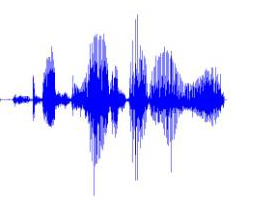APPLICATIONS
 |
Robust Face Recognition Face recognition is one of the most important problems in image analysis and understanding. In many real life situations, face images are either corrupted by noise or partially occluded. We propose a new face recognition algorithm that is robust to occlusions, and does not use any preprocessing techniques. For more information, please click here. |
||||
|
Feature Selection for Face Recognition An immense variety of low-dimensional features have been studied for distinguishing between faces of different people. However, the theory of compressive sensing suggests that the choice of features is less critical within the sparse representation framework. Once the feature space is large enough, our algorithm performs well regardless which features are chosen. Here, even randomly chosen features or severely downsampled images work as well as conventional features. For more information, please click here. |
||||
|
Image Super-Resolution Enhancing the resolution of an imaging system is a problem of interest in many practical applications. The low-resolution image is viewed as downsampled version of a high-resolution image, whose patches are assumed to have a sparse representation with respect to an over-complete dictionary of prototype signal-atoms. We approach this problem from the perspective of compressed sensing. For more information, please refer to our paper, Image Super-Resolution as Sparse Representation of Raw Image Patches. [CODE] [Journal Version] |
||||
 |
Motion Segmentation Sparse Representation can also improve the robustness of unsupervised learning. In particular, we examine the problem of clustering tracked feature point trajectories of multiple moving objects in an image sequence. Due to limitations of the tracker and occlusions, obtained motion trajectories may contain grossly mistracked features and/or missing entries. By proper harnessing the sparse structure of motion data, we show how incomplete and corrupted trajectories can be repaired prior to clustering. For more information, please click here. |
||||
|
Face Hallucination Face Hallucination is the problem of synthesizing a high-resolution face image from an input low-resolution image. We use sparse coding as an efficient means to perform super-resuolution on the input low resolution image. To further enhance the detailed facial information, we propose a local patch method based on sparse representation with respect to coupled overcomplete patch dictionaries. Experiments demonstrate that our approach can hallucinate high quality super-resolution faces. For more information, please refer to our paper, Face Hallucination via Sparse Coding. |
||||
 |
Distributed Segmentation and Classification of Human Actions Human activity recognition has been studied to a great extent in computer vision in the past. We study human action recognition using a distributed wearable motion sensor network. Given a set of pre-segmented motion sequences as training examples, the algorithm simultaneously segments and classifies human actions, and it also rejects outlying actions that are not in the training set. Such sensor networks can be used in applications such as medical-care monitoring, athlete training, tele-immersion, and human-computer interaction. For more information, please click here. |
||||
 |
Robust Speech Recognition (This work is not part of the Perception and Decision Lab) Signal corruption by noise poses a serious problem for Automatic Speech Recognition (ASR) algorithms. By representing each word by a sparse combination of clean signals, Jort Gemmeke and Bert Cranen have proposed an algorithm that achieves high recognition accuracies at low SNR. For more information, please click here. |







